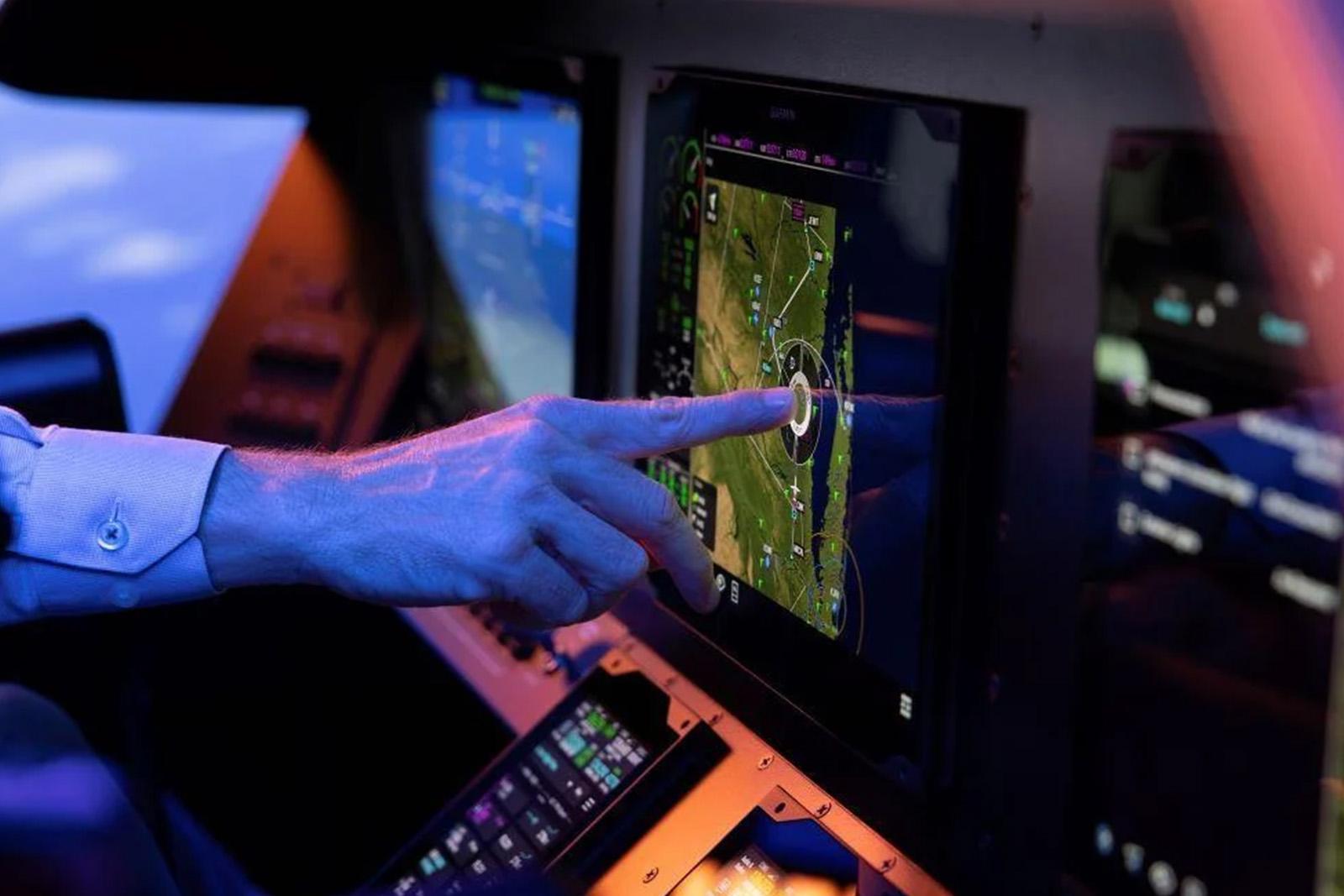
OLATHE, KANSAS—Ahead of NBAA-BACE, Garmin has introduced the G3000 Prime, its third-generation flight deck and its most advanced to date, with touchscreen primary displays and more.
The company has received FAA technical standard order certification, secured a launch customer and expects first deliveries in 2025. Its target market is Part 23 turbine, military and advanced air mobility programs. Garmin introduced the G3000 in 2009. The company is remaining quiet on the launch customer for the G3000 Prime upgrade, saying it will wait on the OEM to announce the program.
The news comes as Garmin celebrates its 35th anniversary. Since then, the company has delivered more than 300 million products across its entire business line and employs more than 20,000 including about 4,500, at its headquarters here , near Kansas City. Besides aviation, its business segments include fitness, outdoor, marine and automotive.
“Twenty years ago, Garmin redefined the general aviation cockpit with the G1000, our first integrated flight deck,” says Phil Straub, Garmin executive vice president and managing director for aviation. “Ten years later, we introduced the G3000, bringing the first touch screens to the light turbine cockpit, and revolutionary technologies like the award-winning Garmin Autoland. With over 30,000 Garmin integrated flight decks in service, we are proud to introduce G3000 Prime, the industry’s most intuitive and advanced flight deck to date.”
The G3000 Prime includes state-of-the-art user interface design and advanced connectivity while leveraging cutting-edge technologies to enhance safety potential and efficiency and minimize pilot workload in every phase of flight, Garmin says. It includes 14-in. touchscreen primary display units with edge-to-edge sunlight-readable and fingerprint-resistant glass with quadruple the memory and gigabit-system connectivity that is up to 100 times faster, it says.
“The hardware and the software is complete, and we will of course continue to evolve and add features and capabilities,” says Dan Lind, Garmin senior director of aviation sales and marketing. “This is a mature product.”
The displays include performance improvements such twice the CPU power, four times the memory, higher refresh rates and the aforementioned gigabit-system connectivity, Garmin says.
“You’re going to notice as you utilize the displays it’s much, much smoother and it reacts very, very well as you go to, say, pinch to zoom or pan across a map,” he says. “And then our system is built upon an Ethernet backbone. We feel like this is our most advanced flight deck we’ve ever made.”
The system is pilot friendly, he says.
Secondary display units provide data entry and system control with additional capabilities to display multi-function applications. High-resolution 7-in. secondary display units increase the screen area by 40% compared to previous Garmin touch controllers.
Its multi-touch touchscreen interface is capable of recognizing up to 10 inputs at once, which allows both the pilot and copilot to interact with the same display simultaneously, Garmin notes.
Secondary display units provide data entry and system control with multi-function capabilities. The 7-in. screens are 40% larger than ones on previous Garmin touch controllers.
The Primary Flight Windows (PFW) and Multi-Function Windows (MFW) maximize situational awareness with full-screen or split-screen options, the company says.
“New quick access bars allow pilots to open common apps such as maps, traffic, weather and charts with one touch,” it says.
The G3000 Prime provides tools, such as a Modified Flight Plan, allowing pilots to use the PDU and SDUs side-by side for a graphical preview of flight plan changes, including performance calculation comparisons or “what-if scenarios.” During initialization, pilots can elect to set up an emergency-return function, simplifying pilot responses to inflight emergencies shortly after takeoff.
The upgraded system includes Autonomi and Garmin Autoland, which takes control of a flight in an emergency when the pilot is disabled. It also offers safety feature such as Smart Glide, Smart Rudder Bias, Electronic Stability Protection, Emergency Descent Mode and Garmin Authothrottle.
